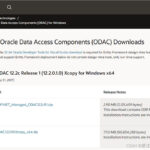The SAP Internet Transaction Server (ITS) stands as a pivotal component, bridging the gap between your robust SAP R/3 system and the vast landscape of the internet. It’s the technology that empowers internet and intranet users to seamlessly interact with your R/3 system, executing transactions, leveraging remote-enabled function modules, and accessing reports as intuitive web applications. Deeply embedded within SAP’s mySAP.com strategy and a core part of the SAP 6.10 Web Application Server, the internet transaction server unlocks a world of web-enabled SAP functionalities.
ITS technology is the invisible engine powering a range of critical SAP products and applications. From enhancing workplace efficiency with self-service capabilities in Employee Self-Service (ESS) to streamlining procurement processes in Enterprise Buyer Professional (EBP), ITS is fundamental. It also plays a crucial role in data management with the BW 2.0 Interface, expands sales channels through Online and Retail Stores, and optimizes supply chain management with the APO Interface. Across the SAP ecosystem, numerous other products harness the internet transaction server to create seamless web interfaces to SAP R/3.
To facilitate comprehensive web access to SAP R/3 data, the internet transaction server expertly manages a suite of complementary web technologies:
- SAP GUI for HTML: Experience your familiar SAP transaction screens dynamically rendered as HTML pages. This allows users to access SAP functionality through a standard web browser without needing the SAP GUI client installed.
- Web Transactions: Design SAP transactions specifically to be invoked directly from HTML pages. This template-based approach offers a controlled and tailored web interface for specific SAP processes.
- Web Remote Function Call (RFC): Directly call SAP R/3 function modules from within HTML pages. This enables developers to build custom web applications that leverage the power of SAP backend logic.
- Web Reporting: Seamlessly integrate SAP reports and dynamically generated lists into HTML pages. Web reporting, implemented as a specialized RFC, provides real-time access to critical business data through the web.
- ITS Flow Logic: Model the intricate dialog logic of your web applications using events, statuses, and modes defined in “flow files” on the SAP internet transaction server. This provides a structured approach to managing the user interaction flow within web-based SAP applications.
Data interaction with SAP R/3 via the internet transaction server is primarily achieved through Business Application Programming Interfaces (BAPIs) or Remote Function Calls (RFCs). Furthermore, ITS architecture is flexible enough to allow access to external data providers, extending the reach of your web applications beyond the SAP ecosystem.
SAP’s web-enabled solutions, often referred to as Internet Application Components (IACs) or Easy Web Transactions (EWTs), are complete business solutions. They empower both internet and intranet users to access vital business information residing within the SAP R/3 system. Users can initiate transactions, execute function modules, and run reports, all directly from a standard web browser. At the heart of every IAC and EWT lies a consistent infrastructure built upon two essential pillars:
- SAP Internet Transaction Server (ITS): The central interface, acting as the runtime engine that intelligently connects your web server to the SAP R/3 Application server. It manages the communication and data exchange between the web and your SAP backend.
- ABAP Workbench Tools: A suite of development tools including the Web Application Builder (WAB) within the R/3 ABAP workbench and the PC-based SAP@Web Studio. These tools are designed for creating, modifying, and managing all the fundamental ITS objects upon which IACs and EWTs are constructed. These objects encompass service files, HTML templates, and HTRC language resource files, providing a comprehensive development environment.
The ITS approach to web application development is rooted in the principle of leveraging existing SAP investments. It acknowledges the wealth of business application logic already present within SAP R/3 – transactions, function modules, and reports – and its integrated development environment. The internet transaction server provides the missing piece: a robust and efficient interface to extend these powerful applications to internet users. Beyond simply making SAP R/3 information accessible via the web, the internet transaction server solution offers significant advantages:
- Simplified Development: Developers can leverage their existing skills and familiarity with the SAP ecosystem. IACs and EWTs are built using the well-established SAP R/3 system, the ABAP Workbench development environment, and the ABAP programming language. Furthermore, developers benefit from integrated data dictionary support from the ABAP Dictionary and seamless transaction handling.
- Streamlined Deployment: The internet transaction server is designed for global reach. It inherently supports the internationalization of applications, making it easier to deploy web-enabled SAP solutions to a diverse user base.
- Enhanced User Experience: ITS-based IACs and EWTs deliver a user experience that is consistent with modern web expectations. They seamlessly integrate into the web environment, providing a familiar look and feel to users accustomed to standard websites.
The strategic separation of programming tasks from visual design is a key strength of the internet transaction server approach. This division of labor allows specialists to focus on their core competencies. ABAP programmers can concentrate on developing the application logic within the SAP R/3 environment using the ABAP Workbench. Simultaneously, user interface specialists can focus on crafting the design and navigation aspects of the application using web-standard design languages such as HTML and SAP’s HTML Business, utilizing tools like SAP@Web Studio or the Web Application Builder within the ABAP Workbench.
The ultimate goal is to deliver applications that communicate effectively with web browsers. By generating documents in standard HTML format, internet transaction server ensures compatibility with all major browsers. This broad compatibility is crucial in the internet environment where control over client-side software is limited. While plain HTML is the foundation, ITS also provides flexibility. Developers can incorporate Dynamic HTML, Java applets, JavaScript, and VBScript within their HTML templates. These scripting languages are transparent to the internet transaction server, allowing for richer and more interactive web applications while maintaining core compatibility.
Thanks,
Shankar


